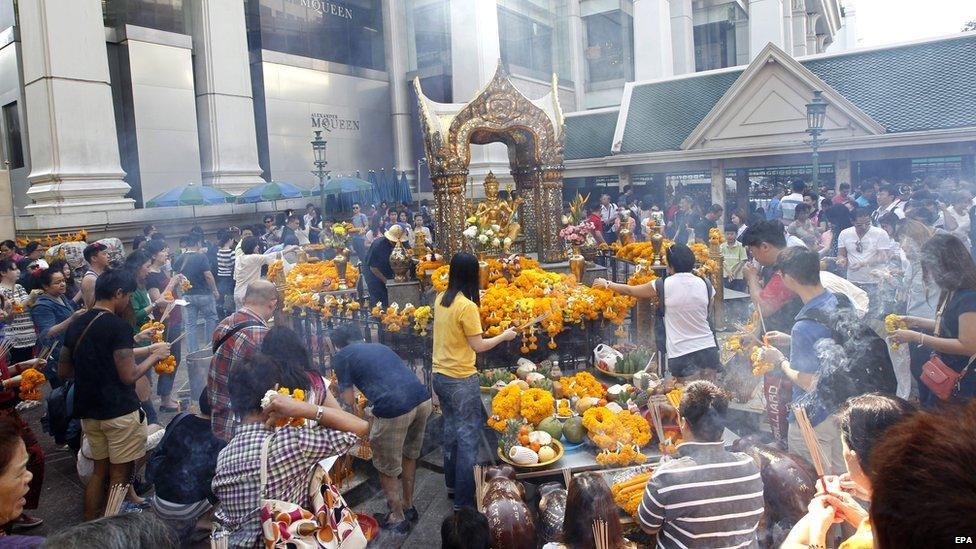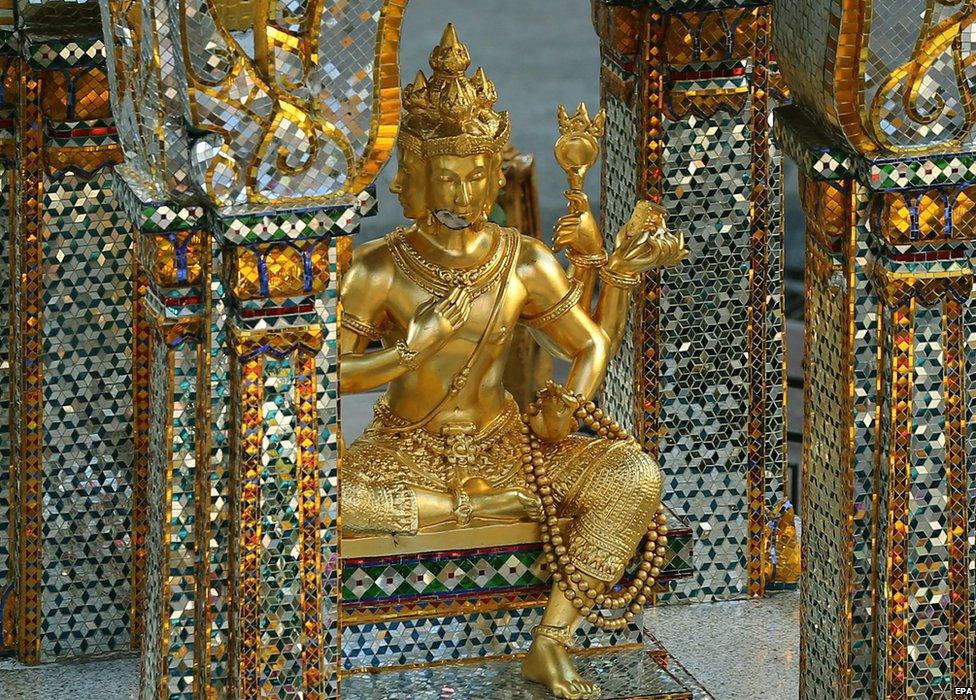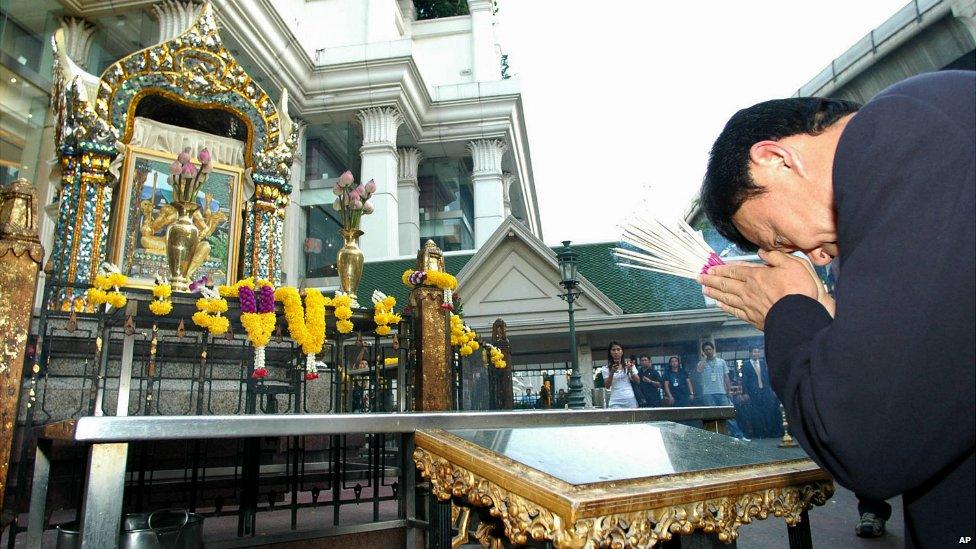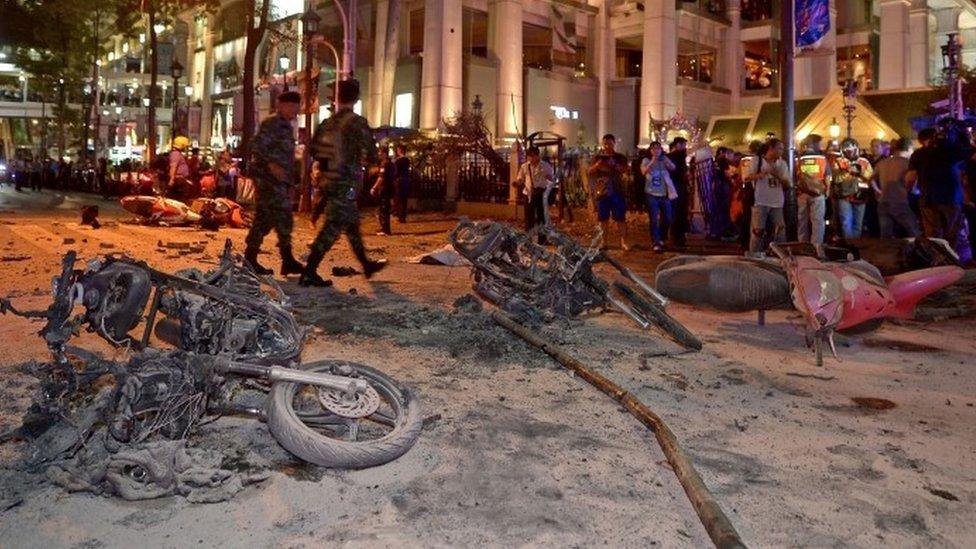Bangkok bomb: Why do people visit the Erawan shrine?
- Published

The Erawan shrine is popular with Buddhists as well as Hindus
The Erawan Hindu shrine is a major landmark in the very centre of the Thai capital, Bangkok - for people coming from East Asia and China in particular, as well as locals.
Every day, thousands visit the shrine and return with gifts when they believe their wishes have been granted.
Street vendors outside sell garlands and wooden elephants to be presented as offerings.
The best known of a number of Hindu shrines in the vicinity, the Erawan was built in 1956 to ward off bad luck from a hotel that had just been built nearby.

The statue of Brahma was slightly damaged in the attack
The shrine houses a golden statue of Phra Phrom - the four-faced Thai representation of the Hindu god of creation, Brahma.
Brahma is worshipped by Hindus and people pray to him for everything from a new child to a lottery ticket.

Former PM Thaksin Shinawatra prayed at the shrine after it was damaged by an attacker in 2006
In 2006, the shrine was attacked by a man suffering from mental health issues. He used a hammer to destroy the deity, before being beaten to death by an angry crowd. Two men were charged with his murder.
A new statue of Brahma was built and the shrine was reopened shortly after the attack.
The shrine sits at the Ratchaprasong intersection - a crossroads in the centre of the capital, surrounded by an iron fence.
It lies between a major hotel and a shopping centre and a number of other hotels are located nearby, as well as a hospital and many offices.
In 2010, the Ratchaprasong area was the site of anti-government protests by supporters of ousted former Prime Minister Thaksin Shinawatra. The camp there was eventually removed at the start of a military crackdown.


- Published17 August 2015
